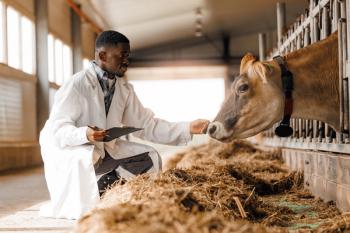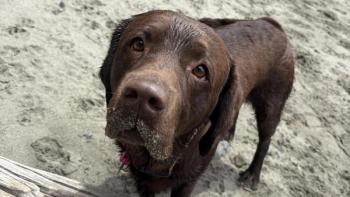
The case for starting anesthetized dental care at age 12-18 months
Presenting at the 2022 Midwest Veterinary Conference, Barden A. Greenfield, DVM, DAVDC championed preventive dentistry for both animal wellbeing and client retention.
Periodontal disease is the most frequently diagnosed problem in small animal veterinary medicine. By age 3 years, 80% of dogs and 70% of cats will suffer from some form of periodontal disease.1 Stage 1 of periodontal disease, also known as gingivitis, is entirely reversible. Stages 2 through 4 are not. These facts serve as the rationale given for early, proactive, preventive action against periodontal disease, as presented by Barden A. Greenfield, DVM, DAVDC, during his session at Midwest Veterinary Conference (MVC).
The 4 stages of periodontitis
Greenfield laid out the progression of periodontal disease and the delineation between its 4 stages. He began by showing a photograph of a canine with no periodontal disease, sometimes referred to as stage 0 periodontitis. “Would you feel comfortable cleaning a stage 0 mouth—no gingivitis?” Greenfield asked those in attendance. “I would argue, absolutely. I recommend it all the time, because you want to treat the mouth and prevent this disease from occurring vs waiting for it to happen and then you treat it.”
He continued his explanation, summarized as follows:
- Stage 1: The only reversible stage of periodontal disease is characterized by inflammation of the gums (gingivitis) and no bone loss, with the first clinical sign being bleeding upon probing.
- Stage 2: Characterized by up to 25% of bone loss, with no tooth movement, a tooth in stage 2 can still be saved with proper treatment such as root planning.
- Stage 3: Characterized by 26-50% of bone loss and movement, a tooth in this stage may be saved with bone grafting, but most likely will be removed due to the expense of bone grafting.
- Stage 4: Also known as advanced periodontitis, stage 4 is characterized by greater than 50% bone loss and the need for extraction.
Treating early is a win-win-win
Greenfield emphasized the logical conclusion based on this information: the earlier that periodontal disease is treated, even before it is technically present, the better the outcome for the patient, pet owner, and practice. By being proactive, the pet suffers less pain and enjoys a healthier life; the client avoids costlier procedures down the road; and the staff can perform less-intensive procedures that are better for the patient. “What would you rather have your dental team doing, a lot of stage 1s and a few stage 2s, or a day full of stage 3s?” Greenfield asked rhetorically. “Which one is going to make them happier?”
Proactive anesthetic oral care for other dental problems
Greenfield explained that being proactive is crucial for more than just periodontitis. He walked through cases demonstrating the value of removing crowded and rotated teeth, embedded teeth, and teeth that contact each other before they become bigger issues. “Not only does this save the client money in the long run, but it provides a higher quality of care for the patient,” Greenfield noted.
Telling the story
Greenfield said that clients are very receptive to the concept of proactive anesthetic dental care, but clinicians must ‘tell the story’ and make the case for it. He said that most clients are simply unaware of the progression of periodontal disease and other dental issues. Pet parents can be incentivized not only by the prospect of saving money over time with preventive treatments, but also with the outlook of a happier, healthier pet. Greenfield said, “You’re setting that pet up for a life of happiness, vs a life of pain and suffering.”
Reference
Niemiec BA. Periodontal disease. Top Companion Anim Med. 2008;23(2):72-80. doi:10.1053/j.tcam.2008.02.003
Newsletter
From exam room tips to practice management insights, get trusted veterinary news delivered straight to your inbox—subscribe to dvm360.






